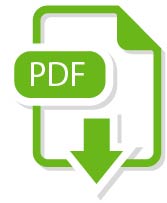Kaohsiung City Zhongshan Industrial and Commercial College—Exquisite Meals and Arts Exhibition
Mathematics and visual art share a common goal of "pursuing perfection". Throughout history, many pioneers have tried to combine the two in pursuit of truth, such as Leonardo da Vinci and the Pythagorean school's pursuit of the golden ratio. In order to strengthen students' cross-domain integration ability, our school has set up a revised elective course "Arts and Mathematics" in accordance with the 108 curriculum to enhance students' aesthetic sense of life, inductive thinking and logical reasoning. In the 110th academic year, we further applied to join the Ministry of Education's cross-disciplinary aesthetic education program, attempting to integrate general field knowledge concepts with higher vocational professional courses and develop the "Excellence in Every Catering" specialty course. In the practice of professional courses in the catering department, we specifically put abstract mathematical concepts into practice, extending different aesthetic and artistic modeling perspectives. Based on the above foundation, after integrating the advice of experts and scholars, student feedback and team teacher discussions, the results of the cross-disciplinary aesthetic education course in the 110-111 academic year were combined with the "Space Anywhere Door" exhibition to establish basic knowledge of mathematics and art; in terms of emotional and cultural context, multicultural education issues were incorporated, and different overseas Chinese students were invited to join the class to share different cultural characteristics with local students. In addition, students were guided to discuss the sustainable food issue of SDGs in combination with the international situation to stimulate discussion and dialogue; in terms of skills, in addition to art as the core throughout each course, art and mathematics knowledge are also integrated and presented in the professional results of life technology and catering. Through discussions with project consultants, we focused on the concept of "vision", exchanged and discussed with partner schools at different learning stages, and developed a cross-disciplinary aesthetic education model course.
The fruit exhibition is promoted to all walks of life so that the course benefits can be expanded and extended in the form of informal courses. The course is divided into four major aspects as follows.
(I) Escher and Bacon’s Polyhedral Space (first semester)
The guided tour of the "Space Door" exhibition guides students to explore different aspects of space through displays. The artist Escher's series of works then cut into the relationship between space and three-dimensional shapes, introducing the Platonic solids in the work "Stars". Students are guided to observe the different three-dimensional shapes that appear in Escher's paintings, such as regular polyhedrons, truncated semi-cubes, and star-shaped rhombus dodecahedrons. Students are also allowed to observe how the artist creates a variety of magical and tilted senses of space. After visiting the exhibition, guide students to try to use sketch pencils and cardboard cutting and pasting to draw the Penrose triangle, and guide students to explore the virtual and real experience that what you see is not necessarily true.
(II) Spatial Magic of Solid Sections (First Semester)
Following the exhibition and spatial experience, students are asked to work in groups to complete the polyhedron assembly task and experience the relationship between three-dimensional modeling and three-dimensional space. The classroom task of cube cross-section was then revealed. Students were asked to first imagine the cross-sectional shape, and then use carrots to try to cut out different cross-sections. After actual cutting attempts, Geogebra is introduced to guide students to observe the different three-dimensional cross-sections of the cube, record the cross-sectional shapes at different angles and directions, and use the techniques of fruit and vegetable carving to present different cross-sectional shapes in the actual fruit and vegetable carving. Finally, the SDGs food waste issue was introduced to guide students to think about how to choose the appropriate parts of fruits and vegetables to carve the required shapes to avoid waste. Students were asked to discuss the feasible ways to use the leftovers after carving, and to propose a zero food waste plan to be implemented in practical courses.
(III) Multicultural Geometric Lighting (Second Semester)
We invited Vietnamese overseas students in our school to share the culture of carrying star-shaped lanterns during the Vietnamese Mid-Autumn Festival. In conjunction with the Loy Krathong Festival, we invited Thai overseas students to share the culture of the Loy Krathong Festival and various lighting shapes. We guided students to observe various three-dimensional lightings and use polyhedron shapes to design lampshades. We integrated the life technology laser cutting course and guided students to laser cut and assemble the designed unit lines to create geometric lighting decorations as venue installations for our school's overseas students' party.
(IV) Multicultural Geometric Plate Decoration (Second Semester)
We invited overseas students from Indonesia to share a dish that must appear during important celebrations and festivals - Nasi Tumpeng, a mountain-shaped turmeric rice tower. We also invited overseas students to share with local students the natural utensils used for serving, so that students can understand that in addition to plastic products, more environmentally friendly natural materials can also be used as serving objects. We introduced the SDGs-friendly farming issue and led students to the campus art and science internship farm to learn about environmentally friendly farming and planting methods, pick fruit and vegetable crops, integrate fruit and vegetable cutting and carving and plating courses with three-dimensional cross-section courses, and guide students to use professional catering techniques to make geometric-shaped turmeric rice towers on platter decorations.

